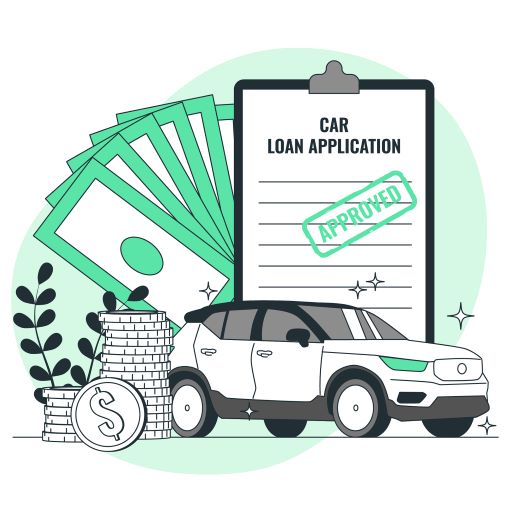How To Do A Car Title Transfer

The title of your car is one of the most significant pieces of documentation you possess. Car titles are crucial, especially when purchasing or selling a vehicle. Your title serves as unmistakable evidence that you are the true owner of the car and have the right to sell it. The most frequent occasions for title transfers are when a car is bought or sold, but they can also be necessary in other circumstances, including when a person's name changes as a result of marriage or divorce.
It's simple to transfer a car title, but because it's a crucial legal document, there are a few procedures that must be followed to make sure the transfer is legitimate. You can use to get connected to your nearest dealerships and get the best offers and incentives.
Main Points
- Because they serve as legal paperwork of a vehicle's ownership, car titles are significant papers.
- When selling an automobile, the seller must provide the new owner with the title.
- For the buyer to have a new title granted in their name, the old title must often be signed when transferring a car title.
- If you have a car loan, your creditor will need to be consulted to transfer the title of your vehicle, and you could be required to repay your debt in full.
How To Obtain Your Car's Title

There are various ways to find your car's title if you don't already possess it. Don't worry if you only have one version of the document; today, both paper and digital versions are acceptable.
To get your car title, pay off your loan
Lenders often retain the title until the related loan is repaid, after which they give the original title document to the car's owner. Owners could get the lien discharged in some states instead. Once you have the title in your possession, you should keep it secure. It is not advised to keep the title in the car.
Ask the DMV for a duplicate title
Your local Department of Motor Vehicles will accept your request to get a duplicate title (DMV). You may obtain an application form at the DMV office or access it online. They may be sent through the mail, in person, or online. To acquire your title, be sure to submit the required payments and paperwork.
Identify the missing title
You can visit the DMV to request a duplicate if your lien was electronically released (and you don't have a release form to file) or if you've just lost your paper title.
Also read: Selling a Car Without a Title
Important details to check during a title transfer
Additionally, the title offers helpful information if you're shopping for an automobile. Take the chance to check the following details before any money is exchanged when you are transferring a car title. Depending on the result, you could decide not to proceed with the purchase.
- To confirm that the car you get is the one you were sold, check the vehicle identification number (VIN). Compare the vehicle's VIN to the one on the papers.
- Check to see if the car is subject to a lien. In other words, you're making sure the current owner has any outstanding debt to the bank on the car.
- In the same vein, you'll want to make sure there are no extra owners listed on the title after establishing that the seller (or the bank) is the vehicle's owner. If there is, you will also want their consent to transfer the ownership to you legally.
- Keep track of the miles of the car so you can fill it out and provide an authentic odometer disclosure.
Tip: The VIN may often be found in one of two places on current cars: either on the structure where the driver's side door opens or on the dashboard on the driver's side, where the windshield joins the car's body.
Tip: You may verify a vehicle's lien status by typing its VIN number into the webpage of your local DMV. The DMV can check the status of your lien for you if you contact or visit them with this information.
Transferring The Title Itself
Although the procedure of transferring a car title to a new owner is generally similar across the nation, specific legal requirements may differ from state to state. To be sure, check with your local DMV. First, ask the seller to sign a notarized assignment of the present title over to you. This must be submitted together with an odometer disclosure agreement and a completed title application. Additionally, a fee could be applied. Utilize the information below to guide you through the title transfer procedure accordingly.
The title will be located for you by the dealership if you purchase from a dealership. The title and other documentation, such as the odometer disclosure, will be coordinated by the dealer if you are paying for the vehicle out of pocket. They will submit the title to the lender if you are financing the car.
Expect a slightly more difficult process when purchasing from a private seller. The procedures are easy if the seller has complete ownership of the vehicle and has paid off the car. Just get a bill of sale from the owner, have him or her sign the seller's part of the title, and take the documents to the DMV. If you're financing the automobile, check the section below on "Buying a Car with a Lien."
You must complete the transfer of ownership and title as the purchaser. You must provide all essential papers, a legitimate form of identification, inspection forms (if applicable), the obligatory sales tax, and other expenses. Additionally, you must promptly register the car in your name. You might face legal or financial repercussions if assigning the lienholder is improperly done or if the DMV is not informed that there is a lien on the car.
To guarantee a seamless title transfer when you are the seller, take the following actions:
- Give a copy of the title to verify ownership and lien status.
- Give the buyer the title, with the option of a notarized signature.
- Give the customer your contact information so you can answer their questions right away.
- Purchasing A Car With Debt
Purchasing A Car With Debt

The lienholder must be added to the title if you're financing, either because the car still has a lien from the initial purchase or because you took out a loan to reimburse the seller. You have two options for handling this: either you or the DMV. Remember that buying an automobile, especially one with a lien on it, requires you to inform your insurance provider as well, because doing so may affect your insurance premiums.
The seller is responsible for giving you the necessary financial details so you can complete the transfer. To enable you to communicate with the seller during the purchasing process, the seller must give you their accurate contact information.
The website of each state's Bureau of Motor Vehicles will offer detailed information if you have further inquiries about the car title transfer procedure or are seeking information relevant to your state.





